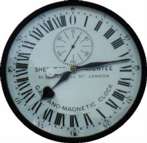
Horology 24-hour faces -- wristwatches -- Stocker & Yale P650 military Universal Genève Tri-Compax Yema «Bipôle Duopoly» -- clocks -- Greenwich Obs. Shepherd
|
.
.
.
.
.
.
.
.
.
.
.
.
.
.
.
.
.
.
.
.
.
.
.
.
.
.
.
.
.
.
.
.
.
.
.
.
.
.
.
.
.
.
|
Universal Genève
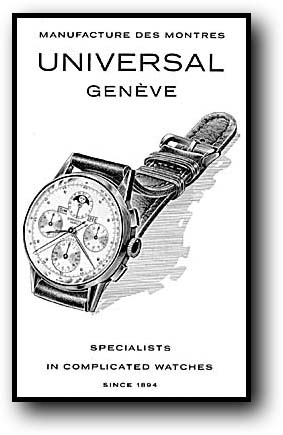
- 1894
- Numa-Emile Descombes and Ulysee Georges Perret registered the name Universal at a Swiss watch-making center, the Rue du College, in Le Locle.
- 1917
- The first Universal chronograph made.
- 1918-9
- The company moves to rue de l'Arquebuse, Geneva (Genève).
- 1932
- The "Compur" chronograph debuts - the first two-pusher system (allowing the wearer to start and stop the seconds hand, avoiding an automatic return to zero).
- 1933
- The world's first hour counter sub-dial, allowing timing on longer events, debuts. Previously timed periods could be no longer than forty-five minutes.
- 1934
- The company was renamed Universal Genève.
- 1936
- The "Compax" debuts - the first to combine two pushers and a 12-hour counter sub-dial.
- 1937
- The "Medico Compax" assists doctors to measure patients' pulse rates more accurately.
- 1940
- The "Aero Compax" - for pilots - displays two time zones.
- 1944
- In the company's golden anniversary year the "Tri-Compax" is introduced.
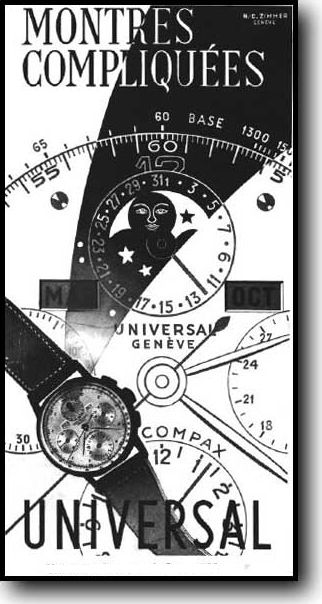 My chronology ends here because that's the end of my intense interest in the company. They do several beautiful skeletonized wristwatches, but the very early Tri-Compax is the object of my affection. (You will see an 1960s model, but only to demonstrate why I focus on the earlier ones :-)
My chronology ends here because that's the end of my intense interest in the company. They do several beautiful skeletonized wristwatches, but the very early Tri-Compax is the object of my affection. (You will see an 1960s model, but only to demonstrate why I focus on the earlier ones :-)
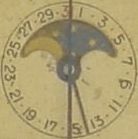
The Tri-Compax is a tripledate moonphase chronograph. It's the moonphase dial that's the most distinctive part of the Tri-Compax face. The disc therein, sporting a painted facsimile of the moon, makes one revolution each 29 days; a lunar month.
What could be more attractive and powerful than having the entire cosmos on one's wrist?
The Tri-Compax has a 17-jewel signed manual wind calendar/chronograph movement (cal. 287), round snap back case (the watch comes in a variety of widths), a satin painted numeral dial, and four registers; constant seconds, 30-minute and 12-hour recorders, date, apertures for month, day, and phases of the moon, chronograph sweep seconds, dial calibrated for tachymetre.
Here are some variants on the Tri-Compax:
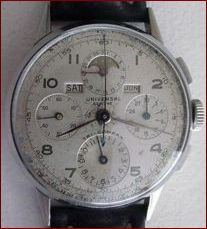
Stainless Steel, English |

Stainless Steel, luminescent hands |
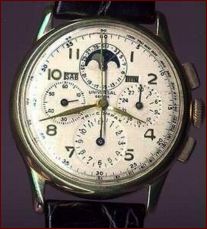
Stainless Steel, Spanish |
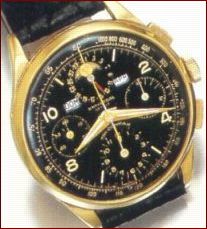
Black face, Spanish |
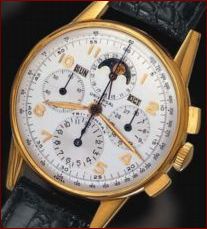
Pink Gold, Thai |
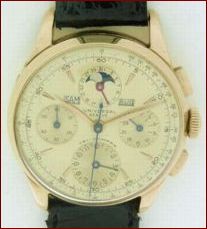
18 K, Thai |
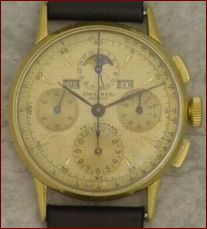
18 K |
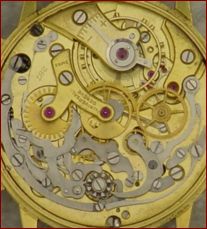
18 K, movement |
In comparison, here are some predecessor (and one ancestor) watches:
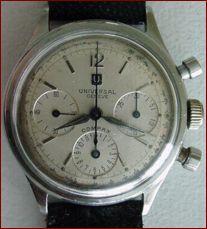
Compax |
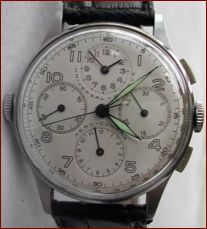
Aero-Compax |
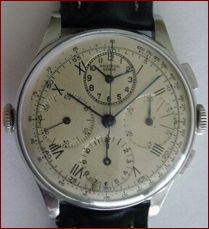
Aero-Compax, Roman numerals |
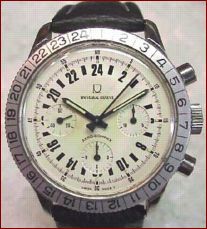
Aero-Compax, 1960s |
Some date information gratefully taken from the company web site.
|
 subscribe
subscribe
 subscribe
subscribe